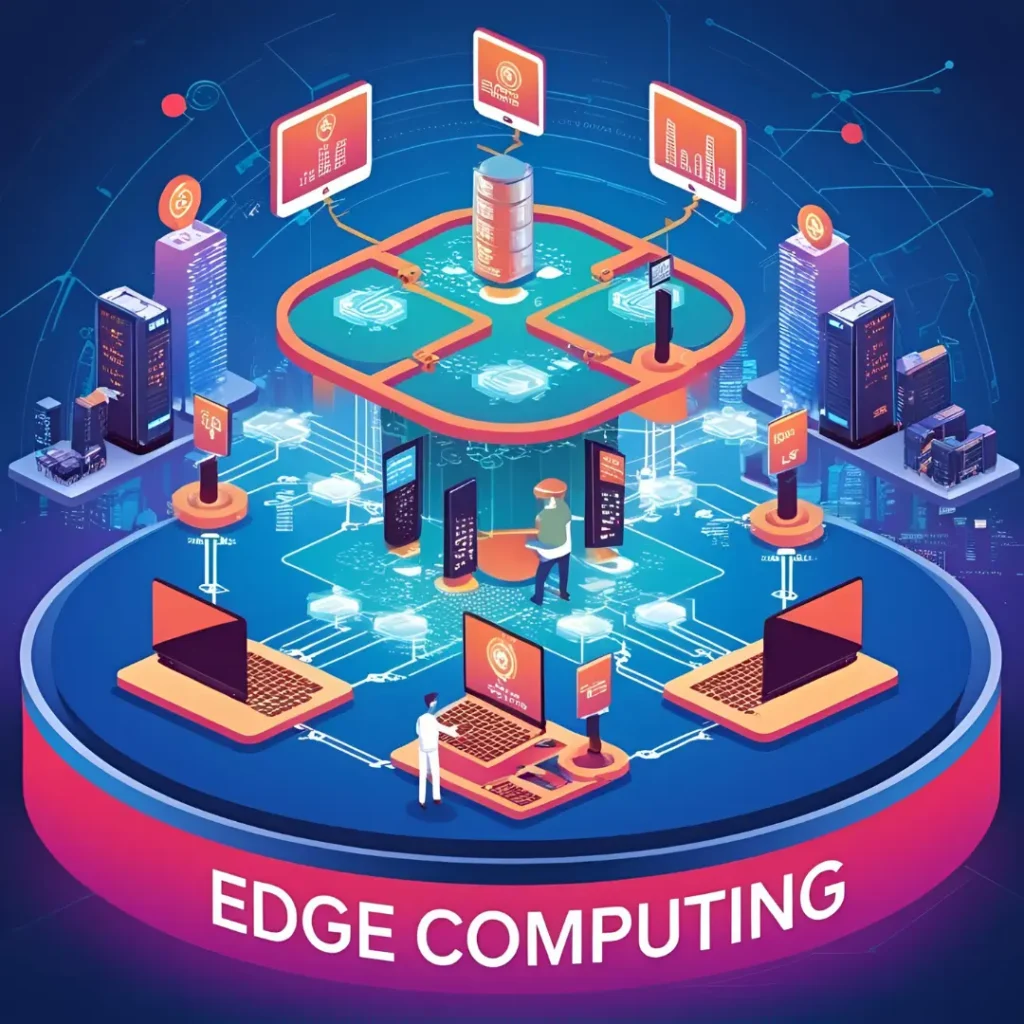Introduction
In today’s digital era, businesses and individuals rely on technology to process vast amounts of data. Traditionally, cloud computing has been the go-to solution for data storage and processing. However, edge computing over cloud computing is emerging as a superior alternative for specific use cases.
What is Cloud Computing?
Cloud computing is a technology that allows data storage and processing on remote servers accessed through the internet. It offers scalability, flexibility, and cost-effectiveness. Businesses have long depended on cloud computing for their IT infrastructure needs. However, cloud computing also has limitations, such as latency, security risks, and high bandwidth consumption. When vast amounts of data need to be processed quickly, cloud computing may not always be the most efficient solution.

What is Edge Computing?
Edge computing is a decentralized computing model that processes data closer to its source rather than relying on centralized cloud servers. This method reduces latency and improves real-time decision-making. By prioritizing local data processing, edge computing over cloud computing enhances efficiency and performance.

Benefits of Edge Computing Over Cloud Computing
1. Reduced Latency
One of the biggest advantages of edge computing over cloud computing is reduced latency. Since data is processed closer to the source, response times are faster. This is crucial for applications like self-driving cars, smart cities, and real-time healthcare monitoring, where delays can have serious consequences. In industries where immediate response is necessary, such as manufacturing automation and emergency services, edge computing over cloud computing ensures operations run smoothly without delays.
2. Improved Bandwidth Efficiency
Cloud computing requires continuous data transfer between devices and centralized servers, leading to high bandwidth consumption. Edge computing over cloud computing reduces the need for extensive data transfers by processing information locally, making it more efficient and cost-effective. Businesses that rely on IoT devices, such as smart factories and automated retail systems, can experience significant improvements in bandwidth usage. This efficiency is one of the primary reasons why organizations are investing in edge computing over cloud computing for long-term sustainability.
3. Enhanced Security and Privacy
Security is a major concern in cloud computing, where data is transmitted over networks and stored in centralized locations. Edge computing over cloud computing minimizes security risks by keeping sensitive data local, reducing the chances of cyberattacks and unauthorized access. Since data does not have to travel long distances to a cloud server, businesses can implement stricter security measures on local devices. This approach is especially beneficial for industries handling confidential information, such as banking and healthcare.
4. Increased Reliability
Internet disruptions can hinder cloud computing operations. Edge computing over cloud computing ensures continuous performance even in cases of limited connectivity. For instance, industrial IoT devices in remote locations can function independently without relying on cloud access. In regions with unstable network connections, edge computing over cloud computing enables businesses to maintain consistent operations without worrying about downtime. This reliability makes edge computing a game-changer for industries requiring uninterrupted services, such as transportation and logistics.
5. Cost Savings
Businesses using cloud computing often face high costs associated with bandwidth and storage. Edge computing over cloud computing helps reduce these costs by processing critical data locally and only sending the necessary information to the cloud, optimizing resources and reducing expenses. Companies looking to cut down on operational costs while maintaining high-speed data processing find edge computing over cloud computing to be an ideal solution. As technology advances, the affordability and accessibility of edge computing continue to improve, making it a cost-effective choice for businesses of all sizes.
Edge Computing Over Cloud Computing: The Future of Data Processing
With advancements in AI, IoT, and 5G, edge computing over cloud computing is becoming the preferred choice for businesses looking for real-time data processing, security, and cost-efficiency. Companies in the healthcare, finance, and manufacturing sectors are increasingly adopting edge computing to gain a competitive edge. The integration of artificial intelligence in edge devices further strengthens the case for edge computing over cloud computing, as it enables machines to make autonomous decisions in real time. As businesses continue to evolve, the role of edge computing over cloud computing will only grow stronger, transforming how data is managed and utilized.
Conclusion
While cloud computing remains a powerful technology, it offers significant benefits, including reduced latency, improved security, enhanced reliability, and cost savings. As more industries embrace this approach, the future of data processing will continue to evolve, making edge computing a crucial part of modern IT infrastructure. Organizations that adopt edge computing over cloud computing early will be better positioned to handle the increasing demands of real-time data processing.
By leveraging the advantages of edge computing over cloud computing, businesses can enhance efficiency, security, and overall performance, staying ahead in the digital landscape. The shift towards edge computing over cloud computing marks a new era in technology, where speed, security, and cost-effectiveness define the success of data-driven enterprises.
Table of Contents
Read out our other blogs related to trendy topics on Tech and AI from here


1 thought on “What are the benefits of edge computing over cloud computing?”